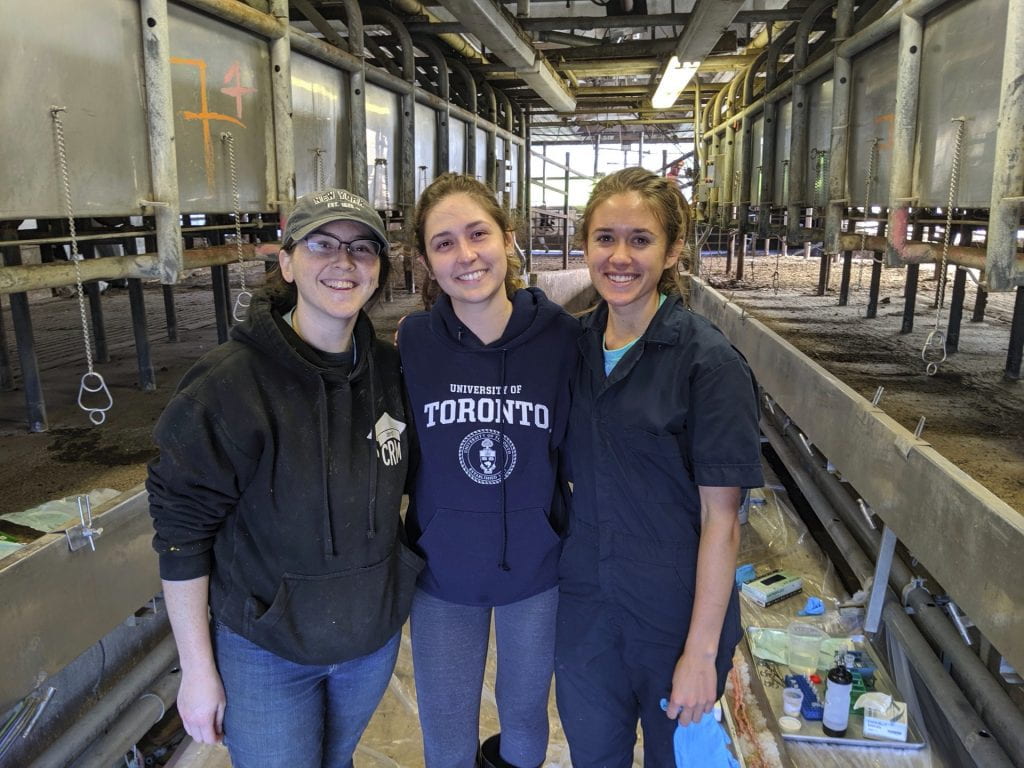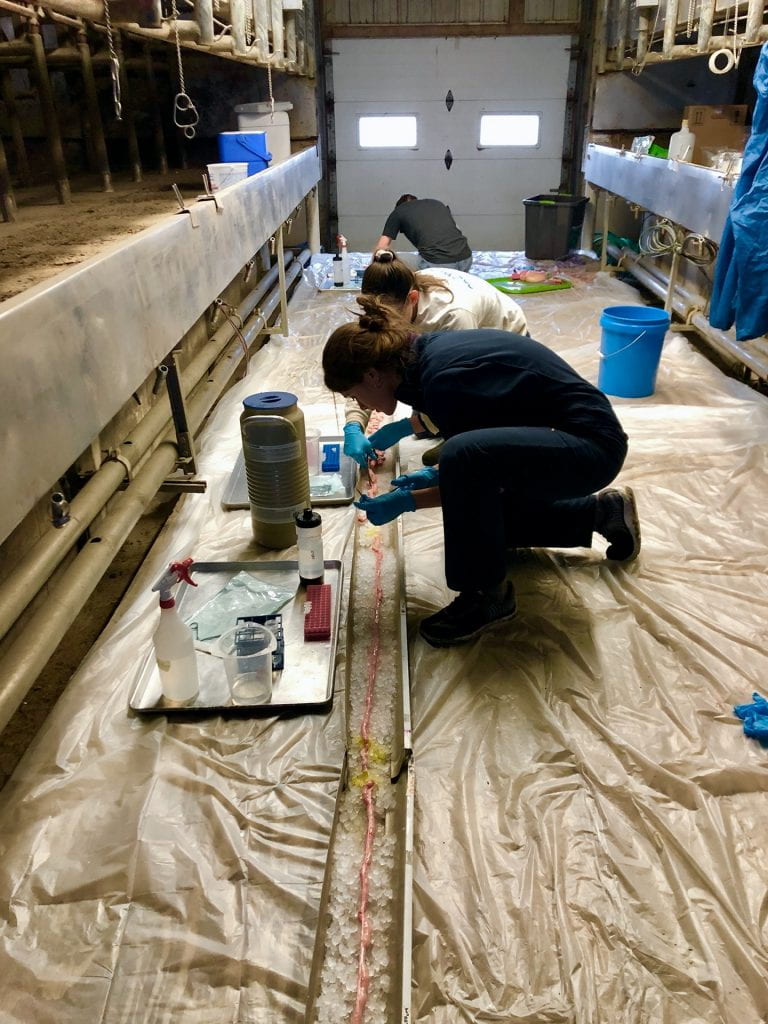Project title:
Maximizing colostrum’s benefits and reducing antibiotic use through physiology-based feeding management of dairy calves
 Principal Investigator: Kasey Schalich
Principal Investigator: Kasey Schalich
Ph.D., Cornell University [June/July 2020 (expected)]
Major field: Animal Science
Minors: Nutrition, Comparative Biomedical Sciences
Research Focus: Bovine Reproductive Physiology
Advisor: Dr. Vimal Selvaraj
Bachelor of Science, Biola University, La Mirada, CA [2014]
Major field: Biochemistry
Minors: Spanish, Biblical Studies
Graduated magna cum laude (GPA 3.825); Dean’s List seven semesters
About this project:
Domestic ruminants are born without a preestablished immune defense system. As such, neonatal calf survival is completely dependent on receiving antibodies/immunoglobulins (Ig) through drinking maternal colostrum (transfer of passive immunity; TPI). Current colostrum feeding practices are dictated by two factors: 1) “good quality” colostrum with a minimum of 200 grams of total IgG, and 2) feeding before ‘gut closure,’ or the time when the calf can no longer absorb IgG. Interestingly, we find these recommendations somewhat arbitrary as our recent work demonstrated that previous methods of quantifying IgG have reported a 3-fold underestimate of colostrum IgG content, in relation to indirect farm-measured Brix % scores. This called for a full re-evaluation of the IgG threshold necessary for optimal TPI. Equally surprising was our finding that mammary biopsies post-parturition indicated active IgG secretion, and contrary to current dogma, we discovered that a second-milking collected 16 hours post-parturition has substantial IgG content. These findings highlight serious gaps to understanding, and the fact that current recommendations are not substantiated by direct and definitive measures consistent with cow and calf physiology, but rather weakly justified. Thus, we hypothesize that the spatial and temporal quantitative examination of immunoglobulin absorption machinery in the calf intestines will unravel the precise extent and duration of TPI preceding calf ‘gut closure’. In direct application, our findings would make physiology-based accurate recommendations that would allow for producers to maximize the benefits of colostrum feeding to improve calf health, reduce antibiotic use and increase overall farm profitability.
Meet the project team!
From left: Cecilia Mondoza (Undergrad), Laurie Francoeur (Grad) and Kasey Schalich (Grad, PI).
Phase I: Sample collection
Sampling procedures are quite meticulous to capture in vivo physiology accurately.
Abdominal viscera from a day old calf
Intestine from a calf is uncoiled on ice to reduce any post-mortem changes and allow sample collection from the different regions.
Measuring pH of the abomasal contents: Melissa vogellus (Undergrad) and Kristen Walsh (Undergrad)




